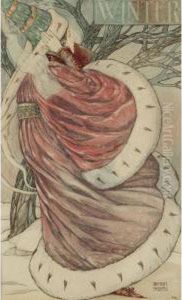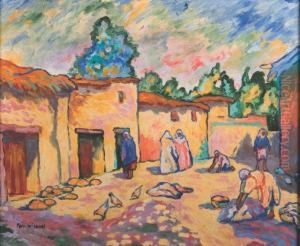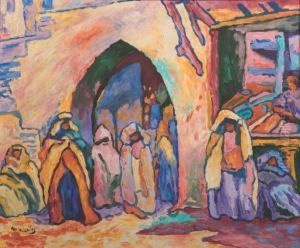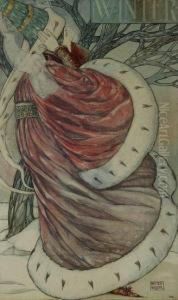Wilson Patten Paintings
George Wilson Patten, known as Wilson Patten, was a British artist born in 1804 in Lancashire, England. He should not be confused with another Wilson Patten, who was a contemporary politician. As an artist, George Wilson Patten primarily gained recognition for his portraiture, although information about his life and work is somewhat limited and less commonly known compared to other artists of the Victorian era.
Patten's artistic journey began with his studies in London, where he was educated at the Royal Academy Schools. This institution has historically been one of the most prestigious art schools in the United Kingdom, providing Patten with a solid foundation in artistic techniques and the classical principles of art. During his time there, he would have been exposed to the works of other great British artists and contemporaries, which likely influenced his own style and approach to art.
Wilson Patten's career unfolded in the 19th century, a period that saw the rise of various art movements such as Romanticism, which focused on emotion and individualism, and later, the Pre-Raphaelite Brotherhood, which aimed to return to the abundant detail, intense colors, and complex compositions of Quattrocento Italian art. Although Patten was not directly associated with these movements, the era's eclectic artistic environment would have impacted the milieu in which he worked.
Patten exhibited his works at the Royal Academy and the British Institution, which were the main venues for artists to display their work at the time. His portraits were well-received, and he painted several notable figures of his time. However, unlike some of his peers, Patten did not rise to the forefront of the British art scene, and as a result, his works are not as well-documented or as prevalent in modern art historical discourse.
Despite the lack of extensive records, Wilson Patten's contributions to the art world during his lifetime were significant enough to merit recognition. His portraits would have captured the likenesses and personalities of his subjects, contributing to the rich tapestry of Victorian portraiture. Patten passed away in 1865, leaving behind a modest but meaningful body of work that reflects his skills as a portraitist during the 19th century.
Unfortunately, due to the limited information available about Wilson Patten, further details about his personal life, artistic influences, and the specific content of his oeuvre are scarce. His legacy, as with many artists of the period who did not achieve widespread fame, is preserved primarily through the works that remain in private collections and possibly in some public institutions.



